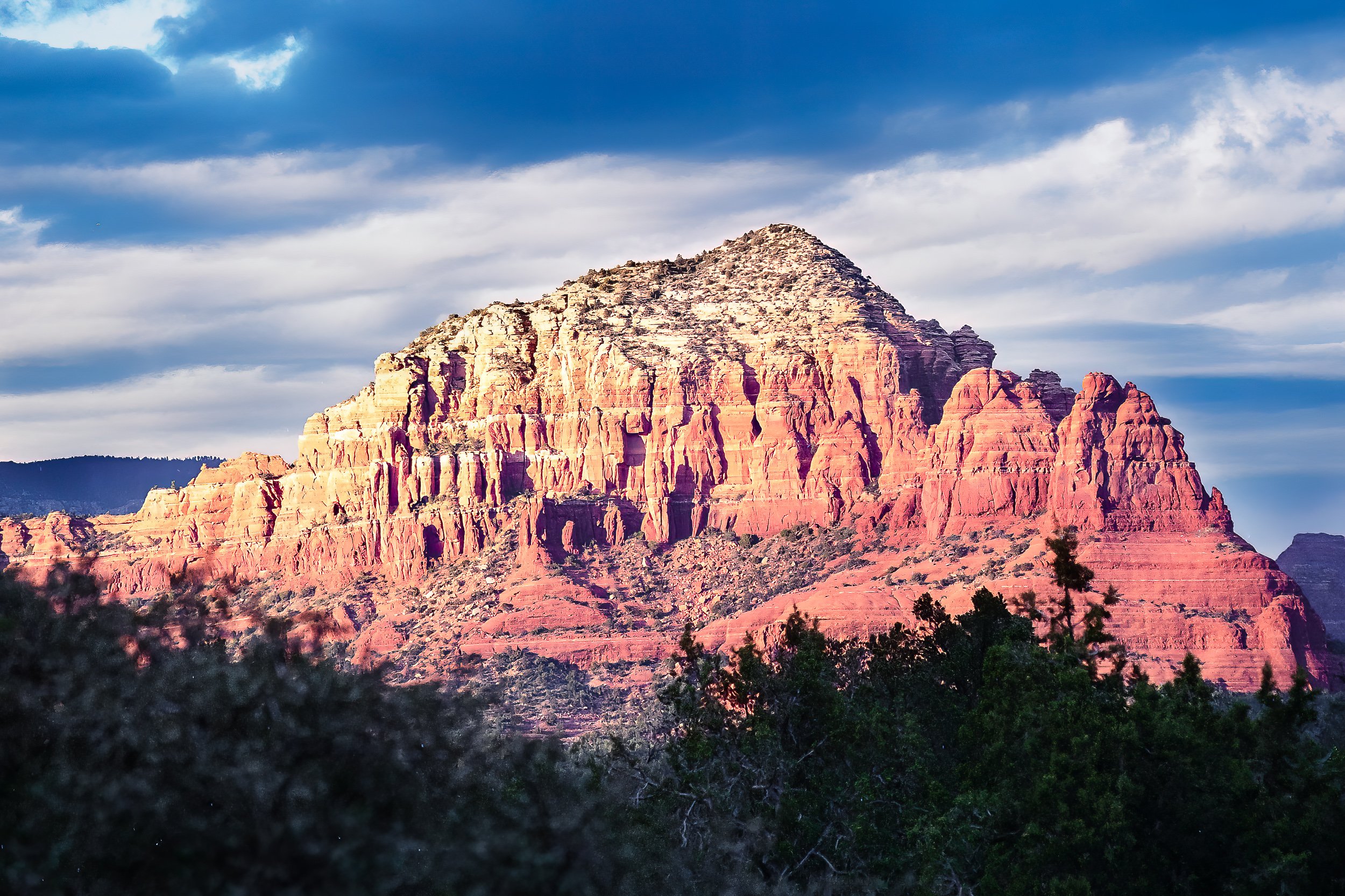
Arizona
Arizona is a spectacularly beautiful state. Whenever we have plans to visit Las Vegas, I immediately think about how I can quickly leave and make a road trip to Southern Utah and Northern Arizona. Sedona and the Grand Canyon typically grab the headlines; however, we’ve come to love Watson Lake in Prescott, Horseshoe Bend, and Antelope Canyon. Read More...
Watson Lake. Watson Lake is an artificial reservoir that fills the Granite Dells, a geological feature north of Prescott, Arizona, that consist of exposed bedrock and massive granite boulders. It is an other-worldly experience. Several years ago, some friends and I casually hiked around the lake during a heat wave with temperatures eclipsing 115F. Admittedly, it was a silly decision, but when you’re young (haha), you believe you’re invincible. Well, hiking in the middle of an Arizona heatwave will quickly remind you how vincible you actually are. Luckily, we escaped without any significant incidents, but another lesson that nature always deserves our respect.
Antelope Canyon. Our favorite place in all of Arizona is Antelope Canyon. Antelope Canyon is a slot canyon located in the American Southwest, specifically in northern Arizona. It is known for its stunning red rock walls, which are formed by the erosion of sandstone over millions of years. The canyon is divided into Upper Antelope Canyon and Lower Antelope Canyon. Upper Antelope Canyon is known for its mid-day sun beams, which stream through the canyon during certain times of the year and create a magical effect. Lower Antelope Canyon, on the other hand, is known for its deeper, more narrow passages and dark, cool atmosphere. Both canyons are equally stunning, and I recommend visiting both if you have the time. The only tough decision we had in Antelope Canyon was which canyon we enjoyed more: Upper or Lower. Our group of friends was mixed on the topic, but suffice it to say that you can’t make a wrong choice.
Horseshoe Bend. Horseshoe Bend is a beautiful natural formation just a few miles from Antelope Canyon. It is a horseshoe-shaped bend in the Colorado River that offers breathtaking views of the surrounding red rock cliffs. From the viewpoint, visitors can see the Colorado River as it winds its way through the red rock landscape, forming a horseshoe-shaped bend that is about 1,000 feet wide. We visited the bend an hour before sunset and captured fantastic dusk photos when the sunlight cast a warm glow on the red rock cliffs.
Antelope Canyon and Horseshoe Bend are popular tourist destinations and attract millions of visitors yearly. They are both located in the Navajo Nation, a Native American tribe that has lived in the Southwest for centuries. If you plan a trip to Arizona, I highly recommend visiting both natural wonders. Just be sure to respect the land and the culture of the Navajo people while you are there.
The only disappointing part of our trip to Page, which hosts both Antelope Canyon and Horseshoe Bend, was the proximity to the Navajo Generating Station, a 2.25 GW Coal Firing Generator. I was perplexed by the decision to place an eyesore of plant - not to mention a significant emitter or CO2, so close to an abundance of natural beauty. After our trip, I did a bit of research on the plant, and to my great relief, I learned that the plant operators had decided not to renew their lease and are currently decommissioning the plant. That’s an excellent win for nature.









